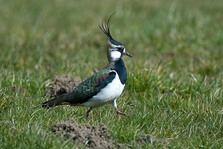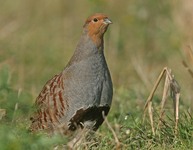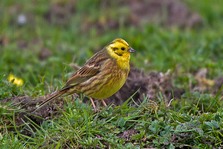

Biodiversity
Action
Plan
Local Priority
Farmland Bird Species
(Included in farmland indicator)
S41, Red List
Grey Partridge
Lapwing
Linnet
Reed Bunting (see reedbed)
Skylark
Starling (see building)
Tree Sparrow
Yellowhammer
Yellow Wagtail
Amber List
Kestrel (see predators)
Green List/Schedule 1
Barn Owl (see predators)
- - - - - - - - - - - - - - - -
S41, Red List birds no longer breeding in Barnsley
Corn Bunting
Twite
Turtle Dove
- - - - - - - - - - - - - - -
Other Farmland Birds
also in Farmland Indicator
Goldfinch
Greenfinch (red list)
Jackdaw
Rook (amber lsit)
Stock Dove
Whitethroat (amber list)
Wood pigeon
Schedule 1 listed
Quail
- - - - - - - - - - - - - - -
Sites
As well as sites with a significant breeding or wintering population of a Priority Species, sites with a significant assemblage of different farmland bird species may be conservation priorities.
For more information:
RSPB:advice for farmers
Farmwildlife:advice
Also see Farming and Wildlife Advisory group (FWAD) and Campaign for the Farmed Environment (CFE)
Farmland birds provide some of our most treasured memories of the countryside: the soaring song of the Skylark, the tumbling display flight of the Lapwing, Partridges with chicks foraging in a stubble field, the characteristic call of a Yellowhammer from a hedgerow, …
Although in common with the rest of the country the numbers of farmland birds in Barnsley have declined significantly in last 50 years, there are breeding populations of Lapwing, Grey Partridge, Skylark, Tree Sparrow, Yellowhammer, Linnet and Yellow Wagtail, it is important to conserve.
Turtle Doves are rare passage visitors to Barnsley, and Twite and Corn Bunting no longer breed here although found not far from our borders.
The declines appear to have been mainly caused by the loss of breeding and year-round foraging habitats in farmland: farmland birds have fewer places to nest, raise fewer young, and are less able to survive the winter.
Arable and mixed farms can support populations of seed-eating and invertebrate eating birds. Breeding success is directly related to lack of predation and a ready supply of food supplies.
Many of the farmland birds feed on seeds throughout the year but feed their chicks on insects. Nectar flower mixtures, cultivated uncropped margins, conservation headlands, beetle banks, ditches and other seed-rich or insect-rich areas can help breeding farmland birds.
As well as nesting within crops or grassland, farmland birds nest in hedgerows and field margins. Fallow plots and buffer strips within fields and spring crops with their lower sward, are good for ground-nesting birds.
Food supplies are also needed to sustain them over the winter when some species numbers increase. Wild bird seed-mixture planting and over-winter stubble help birds with winter feeding. Between mid-winter and spring, farmland birds suffer from a lack of available food. Providing supplementary food for bird populations over this period can help tackle this gap.
Although farmland birds benefit from good generic habitat management, some farmland bird species benefit from particular habitat features. Information on these is given in the section on individual priority farmland bird species - see links below.
Farmland birds


